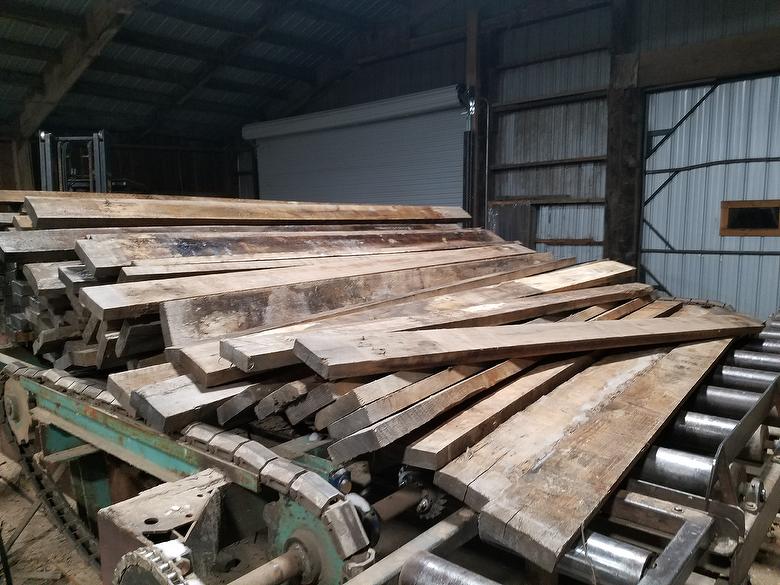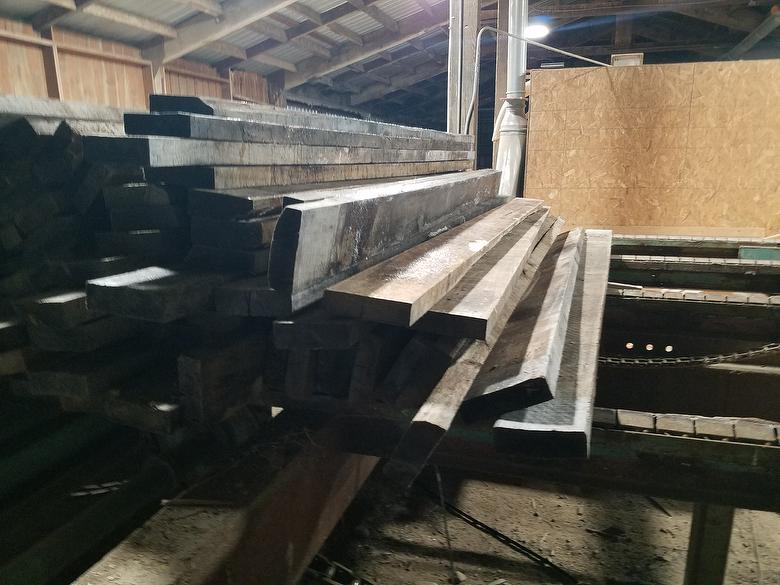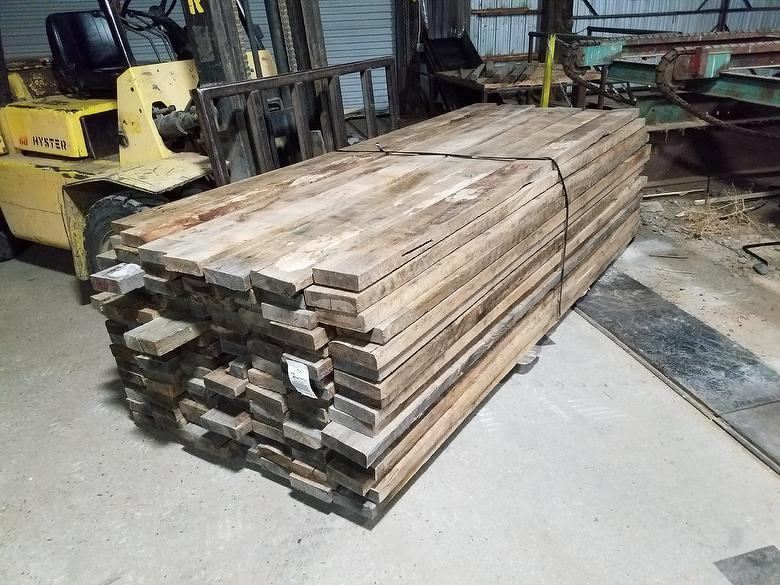2x6 x 8-10' Oak Weathered Lumber
2x6 x 8-10' Oak Weathered Lumber
Specification Sheet #6228 - Antique Weathered Oak Lumber
Request Quote
Height
Width
Length
Quantity
2"
6"
8-10'
min: 250 bf
Related Productline Pages
Antique Oak - Weathered Lumber
Specification Sheet #6228 - Antique Weathered Oak Lumber
Species
Oak (White Oak and Red Oak mixed)
Source
Barns, corncribs, stables, mills, homes and other buildings and agricultural/industrial/construction structures and materials from different locations in North America
Holes
Nails and other fasteners are left in the material or may be removed, leaving occasional nail holes. Staining around nail and fastener holes is common.
Knots
Unlimited; some knots are broken, loose or fallen out
Checking/Cracks
Surface checking is allowed; some cracking is allowed as long as board is sound.
Grain Pattern
Mixed
Moisture Content/Stability
Antique Weathered Oak Lumber is air dried over years of having been in an old structure. The resulting lumber is much more stable and less prone to shrinkage than is green lumber.
Standard Dimensions
a) Thickness: approximately 1" or approximately 2"; b) Standard Width: Random, 3" to 6"; most common widths are 5" and 6"; wider boards (7 to 10"+) are available (please request quote); and c) Length: 1' increments up to 16', with most common lengths being in the 8-13' range.
Weight
Typically, approximately 4 pounds per board foot
Surfacing
Antique Weathered Oak Lumber will have at least one weathered face.
Color/Appearance
Some boards are more rustic than others; in general, boards have a nice aged appearance, with checking, knots, nail holes, stain, some water-stain, etc. (all in varying degrees).
Appearance Variation
Boards can vary in appearance from piece to piece and even within a piece. The characteristics described on this specification sheet generally apply to each board's featured face. The opposite face and edges can differ from the featured face in texture, coloring, and other characteristics unless otherwise noted. Weathered lumber / barnwood will have at least one weathered face. The opposite face and edges can be any combination of weathered and fresh-sawn. If weathered, the weathering will often be different (amount, mix of colors, etc) than on the featured face.
Trestlewood sometimes uses one or more juicing processes to help fresh-sawn and/or less weathered/aged faces/edges blend in with weathered faces/edges. All else being equal, juicing is more likely to be used in situations where (a) lumber is cut from timbers or wider lumber (thereby creating fresh-cut faces and/or edges); (b) Buyer wants all (or most) faces/edges to be weathered/aged; (c) Buyer desires to increase the consistency of the weathered/aged look from face to face; and/or (d) Buyer wants a darker weathered look.
Trestlewood sometimes uses one or more juicing processes to help fresh-sawn and/or less weathered/aged faces/edges blend in with weathered faces/edges. All else being equal, juicing is more likely to be used in situations where (a) lumber is cut from timbers or wider lumber (thereby creating fresh-cut faces and/or edges); (b) Buyer wants all (or most) faces/edges to be weathered/aged; (c) Buyer desires to increase the consistency of the weathered/aged look from face to face; and/or (d) Buyer wants a darker weathered look.





